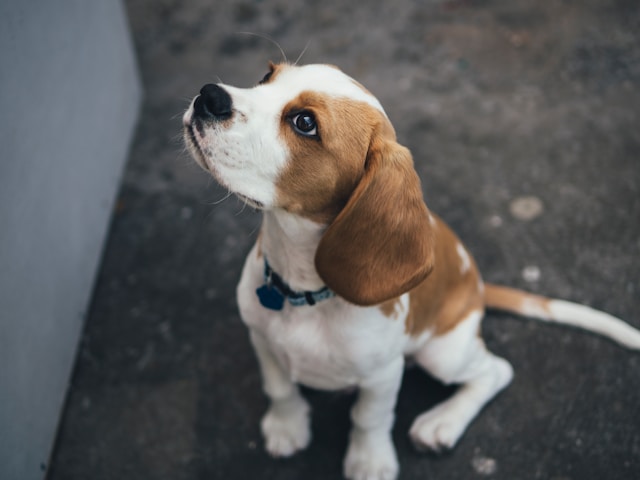Bringing a new puppy home is exciting, but it also comes with a set of challenges. The key to raising a well-behaved, happy dog lies in early training and the first 30 days are crucial. With consistency, patience, and a little structure, you can teach your puppy essential skills, build trust, and prevent common behavioral problems.
This 30-day puppy training schedule breaks down what to focus on each week, so you can make steady progress without feeling overwhelmed. Let’s get started!
Week 1: Building Trust and Routine
The first week is all about helping your puppy adjust to their new home and building the foundation for future training.
1. Housebreaking and crate training a puppy
Start by establishing a potty routine. Take your puppy outside frequently especially after meals, naps, or playtime. Praise and reward them immediately after they go potty in the correct spot.
Introduce crate training early. A crate serves as a safe space and helps prevent accidents indoors. Ensure the crate is cozy and never use it as punishment.
2. Name recognition and recall
Say your puppy’s name in a cheerful tone and reward them when they respond. Begin working on recall by calling them with a happy voice and rewarding them when they come to you.
3. Creating a routine
Set regular times for meals, potty breaks, play, and rest. Puppies thrive on structure, and a consistent daily routine helps them feel secure and learn faster.
Week 2: Basic Commands and Boundaries
With trust and routine in place, begin teaching your puppy the basics of obedience.
1. Teaching sit, stay, and come
Use treats and praise to teach simple commands like “sit” and “stay.” Start with short sessions and be consistent. For “come,” continue using a positive tone and rewarding your puppy every time they obey.
2. Loose-leash walking
Introduce the leash indoors first. Let your puppy get used to wearing it, then practice short walks in a distraction-free area. Use treats to reward your puppy for staying close and not pulling.
3. Discouraging bad habits
If your puppy starts biting, chewing furniture, or jumping on people, redirect them to acceptable behaviors. Offer chew toys and teach “off” or “leave it” to set boundaries. Knowing how to stop puppy biting early helps prevent long-term issues.
Week 3: Socialization and Distraction Training
Now that your puppy knows some commands, it’s time to expose them to new environments, people, and animals.
1. Socializing your puppy
Socialization is a key part of puppy training. Carefully introduce your pup to different people, friendly dogs, car rides, and public spaces. Keep interactions positive and brief at first.
2. Handling distractions
Practice commands in new environments with more distractions. Try the “sit” and “stay” commands in a park or around other people. Gradually increase difficulty as your puppy gains confidence.
3. Maintain crate and potty training
Continue reinforcing crate training and housebreaking habits. By now, your puppy should begin signaling when they need to go outside and feel comfortable in their crate.
Week 4: Reinforcement and Problem Solving
This final stretch is about strengthening learned behaviors and addressing any lingering issues.
1. Reinforce obedience commands
Repeat all commands regularly. Practice in different locations, add duration to “stay,” and increase distance during recall. Keep sessions short and positive to maintain engagement.
2. Address common problems
If your puppy whines, barks excessively, or shows signs of anxiety, identify the triggers. Use positive reinforcement to redirect behavior. For example, if they bark when left alone, give them a food puzzle to keep them busy and help them associate alone time with a reward.
3. Prepare for long-term success
As your 30-day puppy training schedule wraps up, focus on consistency. Training doesn’t stop after a month it’s an ongoing process. The good news is that your foundation is now in place.
Helpful Puppy Training Tools and Tips
-
Use positive reinforcement. Always reward good behavior with treats, praise, or play. Avoid punishment, as it can harm your puppy’s trust and make learning harder.
-
Invest in the right tools. Essentials include a well-fitted collar or harness, training treats, a crate, chew toys, and a short leash.
-
Stay consistent. Use the same words and cues for each command. Everyone in the household should follow the same rules.
-
Be patient. Every puppy learns at a different pace. Celebrate small wins and don’t get discouraged by setbacks.
When to Consider a Professional Trainer
If your puppy shows signs of aggression, extreme fear, or you’re struggling with specific challenges, hiring a certified dog trainer can help. Group puppy classes are also great for reinforcing training and improving socialization.
Conclusion: A Better-Behaved Puppy in Just One Month
Training your puppy doesn’t have to be overwhelming or time-consuming. With a focused approach, you can achieve real progress in just 30 days. From housebreaking to basic obedience, socialization to confidence-building, this plan offers a manageable path to raising a well-mannered, happy dog.

